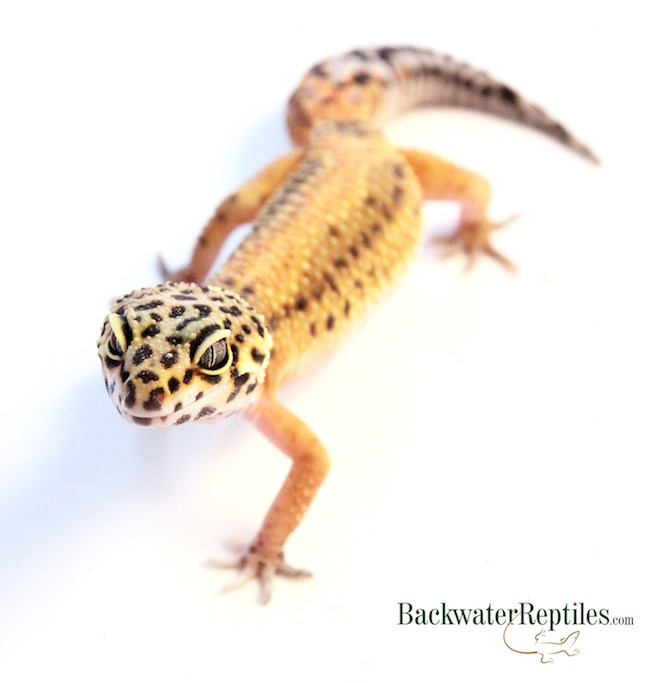How long do Leopard geckos live? Leopard gecko lifespans are often impressively long in captivity, especially when compared to other lizards of similar size, such as anoles and swifts, which usually live for a maximum of 2-3 years. This longevity, coupled with their extreme ease of care, makes these lizards perhaps the best pet reptile in the world.

Female Leopard Gecko Lifespan
Female leopard geckos can easily live for 7-10 years, although this pales in comparison to how long the males can live (see below). The reason females don’t live as long as males is primarily because they repeatedly go through the physically taxing process of mating, reproduction, and egg laying.
Developing and laying two eggs up to eight times each year places an incredible demand upon their relatively small bodies, yet they do so year after year.
Eventually, however, it catches up with them. Females can breed successfully at around 50 grams in weight, but doing so at such a sub-adult size can stifle their growth and shorten their lifespan. The longer female Leopard geckos can go without breeding and reproducing, the longer their lifespan.
Male Leopard Gecko Lifespan
Male Leopard geckos, on the flip-side of the coin, can have extraordinarily long lifespans, with some living past 25 years of age! Yes, you read that correctly. The fact that they don’t have to endure egg development and laying means their bodies are spared the arduous work involved in reproduction.
In fact, they can be effective breeders virtually their entire lives. They do stop growing noticeably after about 14-18 months. A single male can breed a colony of 6-10 females with relative ease. Never keep two males in the same enclosure as they will almost certainly fight, which is at times fatal.
Diet and its effect upon Leopard Gecko Lifespan
Avoid the temptation to overfeed your pet Leopard geckos. There is a trend within the U.S. whereby hobbyists try to get their geckos as big as possible, as quickly as possible, usually for purposes of breeding or sale. This method, usually accomplished by maintaining a dish full of food at all times, is an unnatural way to raise your Leopard geckos.
This type of overfeeding can lead to obesity, which can lead to reduced breeding potential, organ failure, and an early death. There’s a tendency to think a fat lizard is a healthy lizard, but just as with humans, this is not correct. A healthy leopard gecko should be lean (not skinny) and energetic, with a plump tail. Obese leopard geckos have bloated-looking bellies, unusually thick tails (fat reserves), and are usually far less active. Some have fatty deposits directly behind their front legs as well.
In the wild, these lizards don’t have an ever-present cache of food available to them, and as such, should not have food constantly available to them in captivity. Feeding your pet gecko a reasonable number of feeder insects 3-4 times per week is absolutely ideal. Avoid too many waxworms and pinkie mice–moderation is key.

We hope our article on Leopard gecko lifespan has helped expand your knowledge of these wonderful pet reptiles. Consider ordering your own today for delivery to your doorstep, on our page of Leopard geckos for sale. Please don’t miss our Leopard gecko care sheet, either.
